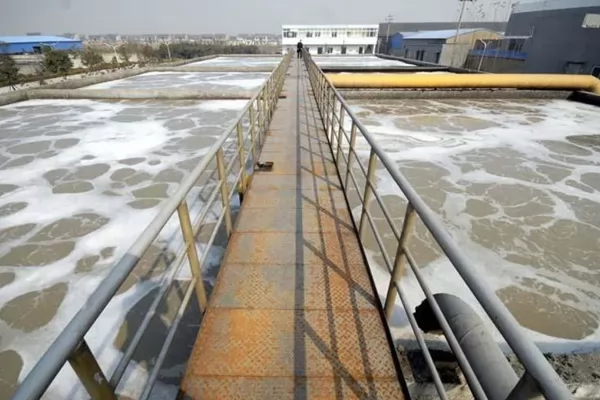
Cost-friendly Yet Lucrative: A Water Treatment of Ammonia Nitrogen Exceeding the Standard
In the process of evaporation treatment of wastewater from by-product ammonium salt (including organic amine) of chemical industry, some ammonium salt will be hydrolyzed and converted into ammonia gas (or organic amine). They enter into the condensate with the evaporation and condensation of water vapor, resulting in the ammonia nitrogen in the condensate exceeding the standard (according to the evaporation process, the ammonia nitrogen content generally varies from 200-1000 mg/L), unable to be discharged or reused, which brings difficulties to the production enterprises, but also causes waste of resources.
Facing this situation, Sunresin (Stock Code: SZ 300487) specially developed Seplite® MC245 ammonia nitrogen adsorption special resin and supporting process, using resin adsorption technology to achieve the precision adsorption and removal of ammonia nitrogen in excessive condensate and other wastewater. This technology, with high treatment accuracy and low operation cost, will not introduce other impurities in the process of treatment, resulting in secondary pollution. While realizing the efficient treatment of the condensate (or waste water) with ammonia nitrogen exceeding the standard, the ammonia nitrogen resource can also be effectively recovered, increasing economic benefits. At present, Seplite® MC245 ammonia nitrogen adsorption special resin and its supporting process and system equipment have been applied to relevant production enterprises. After industrial verification, the resin performance, process operation and treatment effect are good and stable, which has been fully recognized by the industry.

Advantages of resin Seplite® MC245 adsorption process for ammonia nitrogen removal:
(1) High processing accuracy. The content of ammonia nitrogen in the wastewater can be reduced to less than 5mg / L to directly achieve the standard.
(2) The resin can be reused after desorption with acid, and the operation cost is low. After adsorption saturation, the resin can be desorbed with dilute sulfuric acid (or hydrochloric acid), and the resin can be reused after desorption; the content of ammonium salt (including organic amine salt) in the desorption solution can reach about 8%, and it can be returned to the ammonium salt evaporation section to evaporate, which can recover ammonia nitrogen and increase the output of ammonium salt.
(3) The resin has good mechanical strength, strong pollution resistance and long service life. The special skeleton structure and functional group design of Seplite® MC245 resin enable it to have good mechanical strength, anti-pollution and anti-oxidation ability. The service life of the resin can be up to more than 5 years, and it can adapt to the effective removal of ammonia nitrogen under different water quality conditions.
(4) Resin treatment capacity is large, desorption regeneration is easy. Seplite® MC245 resin has a large adsorption capacity and is easy to regenerate. The high concentration of ammonium salt in the desorption regeneration solution and the small total amount of desorption solution can significantly reduce the cost of subsequent treatment.
In the industrial treatment of ammonia nitrogen excessing in water, Seplite® MC245 resin often cooperates with Sunresin Seplite® XDA series of macroporous adsorption resins, and they are used together to remove the azeotropic organic residues (such as n-butanol, toluene, butyl acetate, etc.) in the condensate to reduce COD and recover solvents. Relevant details and more resin environmental protection applications will continue to be updated, please follow up for the updates.















